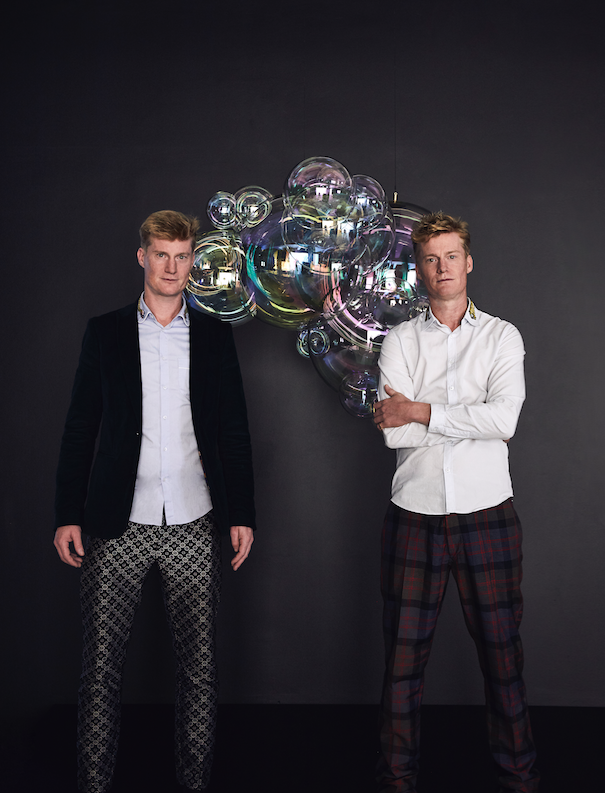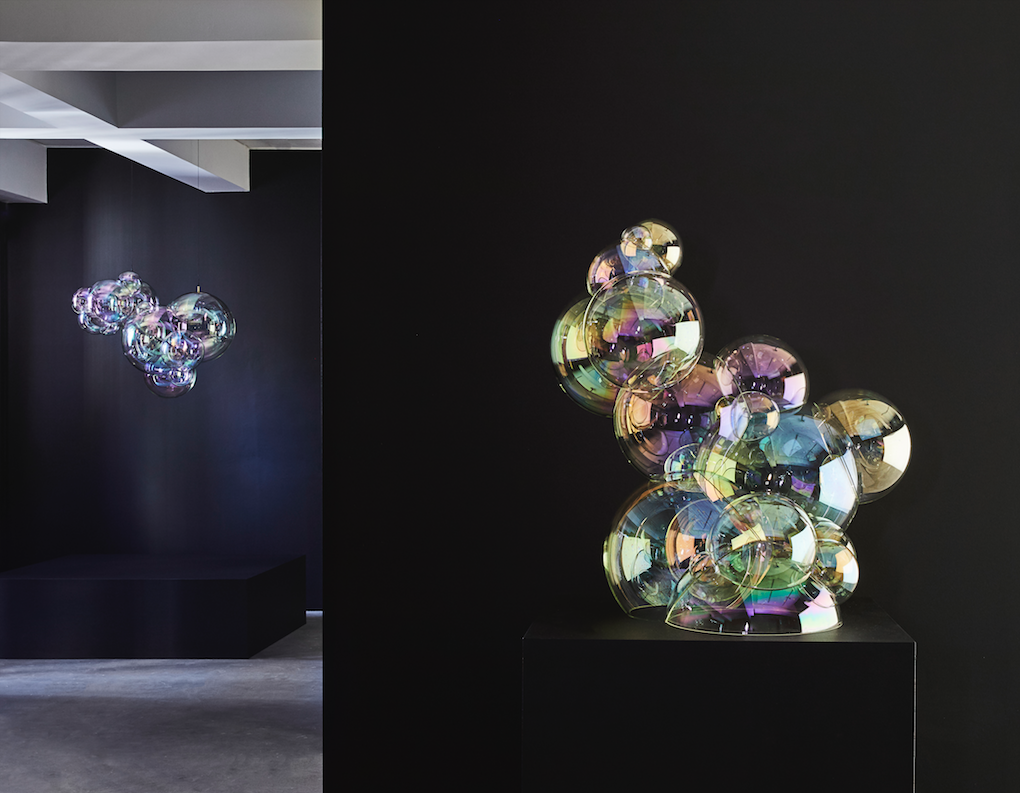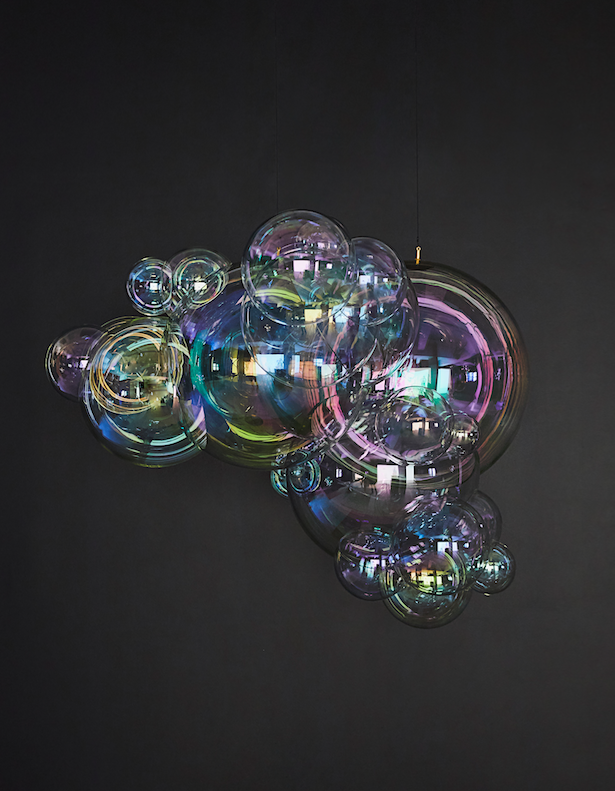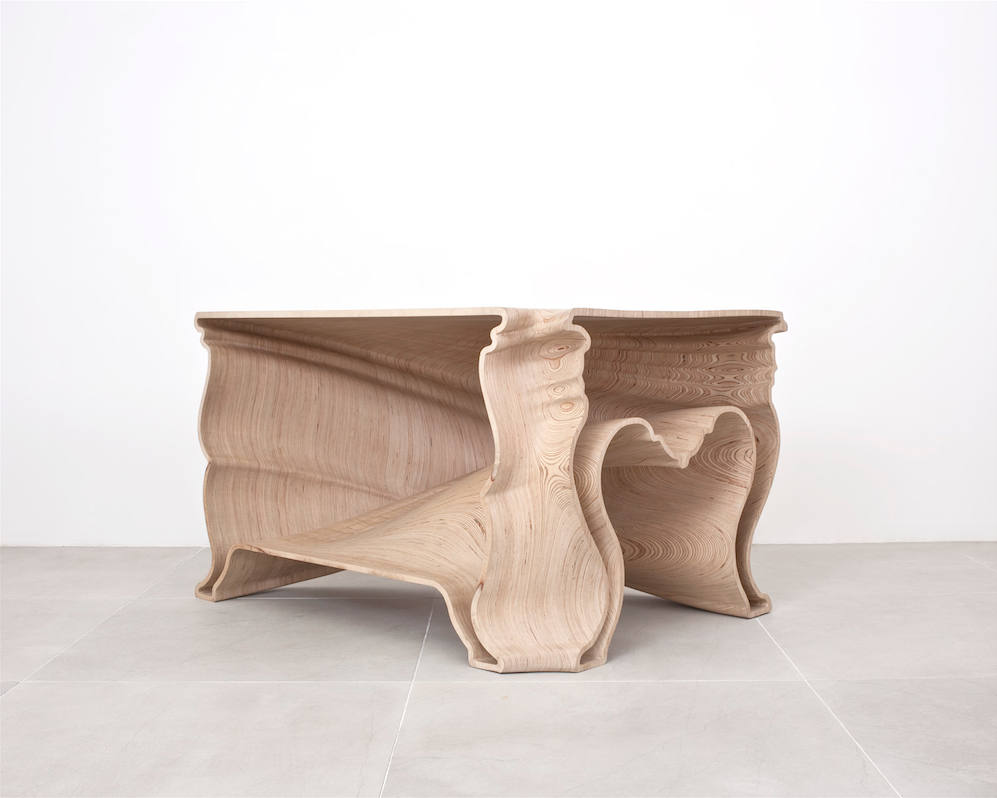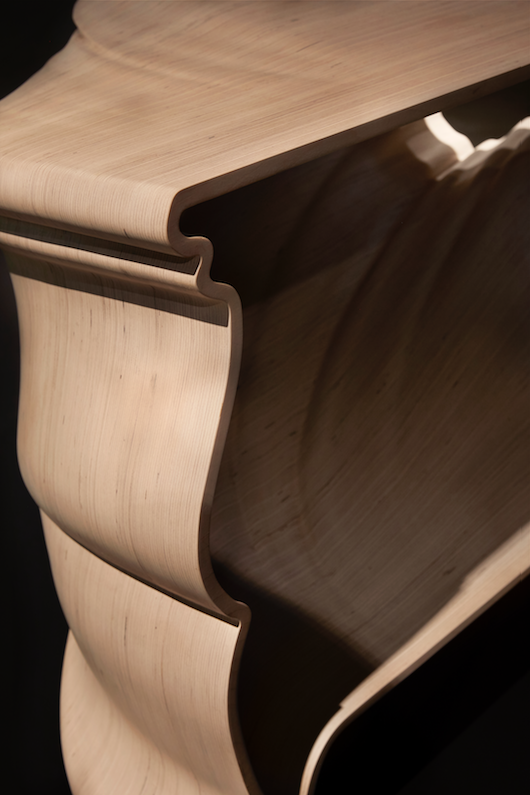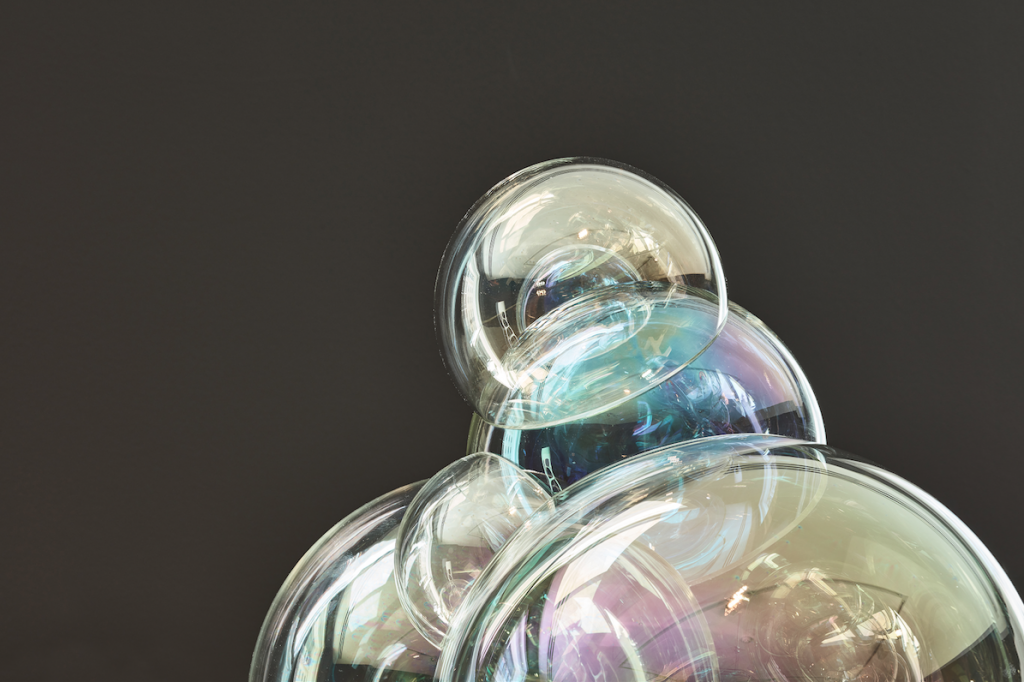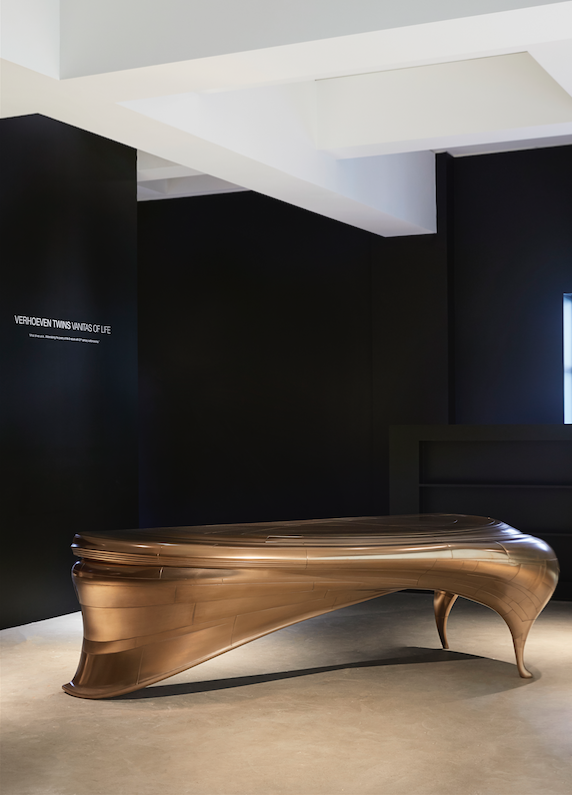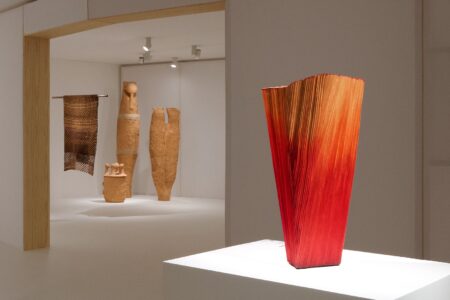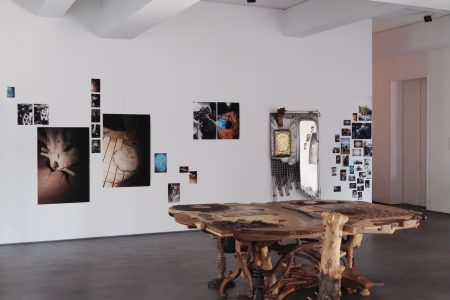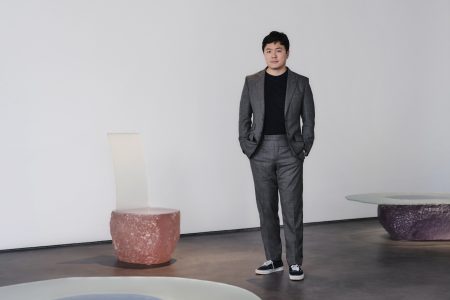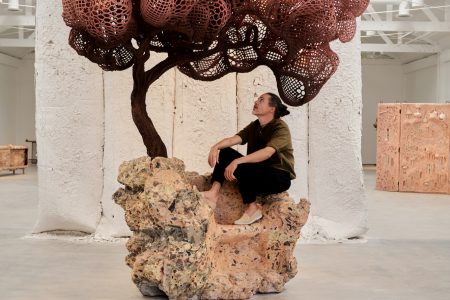Bubbling Happiness with the Verhoeven Twins
TLmag caught up with the Verhoeven Twins to discuss how they combine advanced machinery with craft and time to create their seemingly impossible artworks
The Verhoeven Twins push modern technologies to the limit. For seven years the Dutch designers Jeroen and Joep Verhoeven have dedicated their time and efforts to creating bubbles. But not just any bubbles. These are borosilicate glass bubbles that will be forever frozen in time. Their giant, smooth iridescent surfaces make you wonder at their fragility, their beauty and their little bit of magic.
Celebrating this achievement is the Carpenters Workshop Gallery, New York who is hosting the first ever solo show of the Verhoeven Twins in the US. Entitled Vanitas of Life, the exhibition brings together the iconic Cinderella Table (2005), the Lectori Salutem desk (2010) and their most recent works You and I, Still Wonder and Forever You – the series of bubble sculptures that make up the Shape of Water Collection.
We caught up with the Verhoeven Twins to discuss their strive to create happiness and the role of 21st-century craftsmanship:
TLmag: Why did you choose to work with bubbles as our subject matter for your most recent pieces in The Shape of Water collection?
Jeroen and Joep Verhoeven: Bubbles have existed for thousands of years and are so iconic as a symbol of happiness and innocence but also of futility. At any moment it can burst. And that is the same with happiness, you can’t control it. We were not trying to control happiness but trying to show you a piece of it with the backbone of 21st-century craftsmanship. All of our work is highly complex to make and that is because we love to work with tools, we love to work with the most advanced technologies and dive into science.
You can sculpt bubbles in a million ways but we thought that this way was the most poetic. It brings back the naivety of being a kid, of being in love and having this little bit of happiness with everything around you.
What was the biggest challenge of making the collection?
The biggest challenge of creating these pieces was that most people said: “it is not possible to cut glass like this”. No one has ever cut glass in 3D with a robot. We fell on our face so many times while making this but we expected to. That is the beautiful thing about our process, this fighting. We are not aiming for what is normal but instead, we are saying “we will not accept that these tools can only do this from range A to range B.” We want to go from A to Z and then above and further than that.
Also, behind the scenes, we were working many nights with a big team. If you can imagine that there is a whole team of engineers that are ten times as smart as us and we are all trying to solve problems. We are literally a problem-solving machine and also a family. There is some drama and it is not always easy because nobody is calm. But in that mayhem and chaos, we make beauty.
And, apart from the challenges, were there any surprises throughout the process?
The surprise was that it was far more difficult and complex than we thought. We expected that it would be difficult but it was really next level difficult.
We had already made the Cinderella Table and the Lectori Salutem desk so we were used to going really far but this is the most complex work that we have ever made. It took many, many, many years to come to this point and we have never broken so much glass in our lives than since we started this project.
How have people responded to seeing the bubbles at the exhibition?
When we were building up the pieces, the reaction from all the people was overwhelming.
As artists, many years ago we thought to ourselves “this is going to be the most beautiful thing ever made.” Then when you finally make it, you feel very insecure. Every reaction you get is unexpected because at a certain moment you stand there and think “maybe nobody likes this… Maybe it’s just us thinking it’s magic.”
So when we get all these different reactions like: “Congratulations, this is such an amazing work” and we get the goosebumps because we achieved what we were aiming for.
What is it that you are aiming for in your work?
For us, the most important thing is the feeling of happiness. If you look at our artwork you should get a smile, a serious smile. And not only once, it should be a timeless smile. With our pieces, we try to capture a moment of amazement. A moment of love.
What materials and processes allowed you to achieve the final pieces in the ‘Shape of Water’ collection?
I hope that when one looks at them, they only see bubbles and not our technical struggles. However, the material is important. It is the best and strongest and most stable glass in the world. You can find more expensive glass but this is the best glass. It is made in America. It is laboratory glass and because of this, the technical features of the material were perfect for the research and development that we had because we needed almost perfection. Perfection does not exist but we needed something that we could sculpt and measure in 3D.
We first worked with Italians because they were very experienced in precise work, they succeeded to make it but we changed it because we wanted to make it not with a computer. Their machines were advanced but we wanted to lift it up, even more, so we went to a robot which has six axes. This robot is dancing to the maximum while also being so delicate because if it is not the glass simply breaks. One cut takes a whole day. It takes a lot of patience. And this is just the cutting which does not even include the chemical treatment or the oil effect.
How do you feel having your work shown on Fifth Avenue for your first solo show in America?
Having the prototypes now hanging in New York is an achievement that comes from seven years of development. It proves that this little magic can exist.
Showing it there lifts it to a new perspective. The was that the pieces work in the space was, for us, one big magical trip. In this pristine, beautiful building, it is like putting the most beautiful ring in the most beautiful box in the right location.
And now we have started to imagine where else the bubbles could fit. We can’t wait to show them in Venice to create the contrast between something that has existed for thousands of years and something that was made in the 21st century.
Fairy tales and a sense of magic seem like common themes in your works with the Cinderella table and the childhood nostalgia of bubbles, why are you drawn to them?
We believe that fairy tales have a serious heritage. Everybody wants to be shown a fairytale but to make it real and to materialize the story is what we try to achieve.
You have to imagine that life always connected to death, we are aware that one day it will all be gone, finished. Like a bubble, it will burst but that makes us celebrate the moment of being alive even more. We could choose to talk about death, skulls, darkness and fear but it is so easy to be negative. It is harder to give people goosebumps from beauty. It is much harder, but that is the route we chose to take.
You mentioned the heritage of fairytales but there is another element of heritage that is to a major part of your work which is about craftsmanship. Why is the concept of craft so fascinating to you?
As artists we cherish heritage, we cherish history, we cherish something that has existed for hundreds, or sometimes thousands, of years but then we try to put it in our own context of the 21st century. So, if you combine the value of heritage with the most advanced tools in the world then that is our language.
Why is this 21st-century craftsmanship so important at this moment in time?
For us, this 21st-century craftsmanship is about taking time to ask: “what if you have the best tools in the world?”. Time is an important element because now the time goes fast but imagine if you slow down and search for the maximum talent possible in a machine.
What we hope to achieve is for people to question if our work is made by hand or machine. If we have that then we also have a reason for using 21st-century tools. The Cinderella Table cannot exist on a drawing, it needs a 3D computer program to see it, to understand it, to sculpt it. We sculpted the table on the computer. Every line is decided.
Also, we live in a society where nothing seems impossible. To show something in the real world and to still amaze people in an “all is possible society” is hard. Swiping screens has become the most important thing in this world and we hope that everybody stops. We all decide how to perceive the world around us in a split second of a first impression. Just imagine that in that split second our work can make people stop.
How can you achieve that?
We think what happens with our work is that normally when you see something there is an obvious “route of explanation” which allows you to instantly tell how something is made – even if you have never built a building you understand that it is put together with bricks, windows and doors. However, If you can stop people because their instinct cannot explain how something is made, then you open a door to another little route. And, if you can reroute someone’s thoughts from what they are used to, that means that everything can be different, everything can be a little bit of magic.
Vanitas of Life will be on display at the Carpenters Workshop Gallery, New York until December 22
